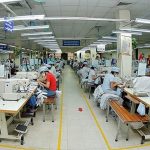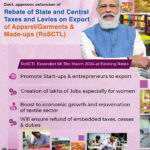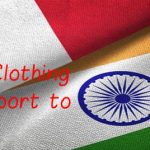 With regard to the export of cotton, the country has witnessed a very strange and tricky situation this year making the government’s decision irrelevant and unacceptable to the stakeholders – cotton producers, ginners, cotton traders and the consuming industries like spinning mills, yarn traders, power looms, composite mills and of course exporters and importers of these materials including raw cotton. The government and others involved in policy making got sandwiched between two groups whose vested interests had been diagonally opposite irrespective of the fact whether the export was allowed or banned. I feel that this makes a very interesting as well as important case study for our premier institutes of management. Their in-depth study of various aspects of this complex situation can help the government to strike a balance between various stake holders and ensure that the farmers get their fair and assured returns and unscrupulous hoarders get punished. The consuming mills should also not blow up their price concerns just to make more profits or cover up their inefficiency. The middlemen also need to be monitored so that they are not able to exploit the farmers who lack business acumen to deal with the buyers of their produce.
With regard to the export of cotton, the country has witnessed a very strange and tricky situation this year making the government’s decision irrelevant and unacceptable to the stakeholders – cotton producers, ginners, cotton traders and the consuming industries like spinning mills, yarn traders, power looms, composite mills and of course exporters and importers of these materials including raw cotton. The government and others involved in policy making got sandwiched between two groups whose vested interests had been diagonally opposite irrespective of the fact whether the export was allowed or banned. I feel that this makes a very interesting as well as important case study for our premier institutes of management. Their in-depth study of various aspects of this complex situation can help the government to strike a balance between various stake holders and ensure that the farmers get their fair and assured returns and unscrupulous hoarders get punished. The consuming mills should also not blow up their price concerns just to make more profits or cover up their inefficiency. The middlemen also need to be monitored so that they are not able to exploit the farmers who lack business acumen to deal with the buyers of their produce.Let each stake holder’s business model be studied to bring out the real facts.The export restrictions have been responsible for the misery of cotton growers in all the major cotton producing States who were denied attractive prices to their produce and export in the international market for fetching handsome remunerative prices. The ban is believed to be not only anti-farmers but also against the WTO norms and also undermines the spirit of free economy. The organized sector mills’ associations say that the mills are facing the “worst ever crisis during the past several decades” and therefore the export of cotton should be banned to provide relief to them. The different stakeholders have different demands and also vested interests but the government must see that no one takes undue advantage of the government policies which must be formulated considering the farmers’ realization on top of everything else. Let every stake holder accept this basic point. If everyone, except the farmer, is making money in the value chain then it is going to be shame for the government as well as the civil society. I feel that the government should seek help from various IIMs in policy making and monitoring.
Managing Editor




